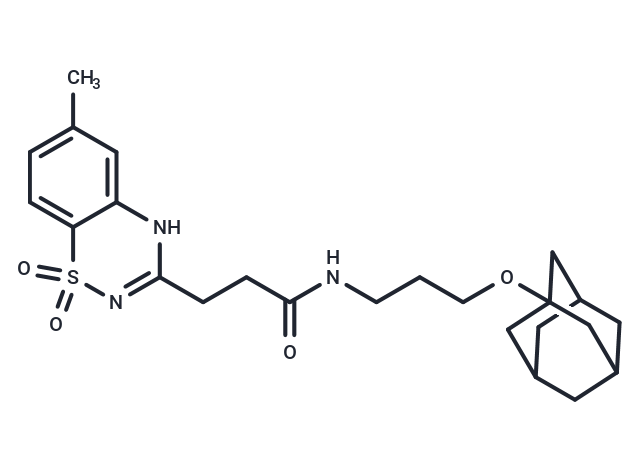Shopping Cart
- Remove All
 Your shopping cart is currently empty
Your shopping cart is currently empty

BTD is a selective transient receptor potential classical 5 (TRPC5) activator, which activates heteromeric channel complexes formed by TRPC5 and its recent relatives TRPC1 or TRPC4, used for studying neurodegenerative diseases.

| Pack Size | Price | Availability | Quantity |
|---|---|---|---|
| 2 mg | $48 | 5 days |
| Description | BTD is a selective transient receptor potential classical 5 (TRPC5) activator, which activates heteromeric channel complexes formed by TRPC5 and its recent relatives TRPC1 or TRPC4, used for studying neurodegenerative diseases. |
| Targets&IC50 | TRPC5:1.4 μM (EC50) |
| In vitro | BTD can activate TRPC5 with EC50 values of 1.4 μM (fluorescence microporous Ca2+ analysis) and 1.3 μM (in whole-cell patch-clamp experiments). BTD can activate TRPM8-expressing HEK293 cells with an EC50 value of 20.6 μM. BTD can activate the heteropolymeric channel complex composed of TRPC5 and its close relatives, TRPC1 or TRPC4. [1] BTD treatment down-regulates TRPC5 expression by increasing the activity of protein kinase C, thereby down-regulating downstream pain markers (CAMKII, ERK) in the spinal cord. [2] |
| In vivo | BTD (1 and 3 mg/kg intraperitoneally injected for 14 days) improved mechanical pain in diabetic neuropathic rats, but did not improve hypothermia or neurological deficits. [2] |
| Molecular Weight | 459.6 |
| Formula | C24H33N3O4S |
| Cas No. | 896684-04-1 |
| Smiles | O=C(NCCCOC12CC3CC(CC(C3)C1)C2)CCC4=NS(=O)(=O)C5=CC=C(C=C5N4)C |
| Storage | Powder: -20°C for 3 years | In solvent: -80°C for 1 year | Shipping with blue ice. | |||||||||||||||||||||||||||||||||||
| Solubility Information | DMSO: 80 mg/mL (174.06 mM), Sonication is recommended. | |||||||||||||||||||||||||||||||||||
Solution Preparation Table | ||||||||||||||||||||||||||||||||||||
DMSO
| ||||||||||||||||||||||||||||||||||||

Copyright © 2015-2025 TargetMol Chemicals Inc. All Rights Reserved.